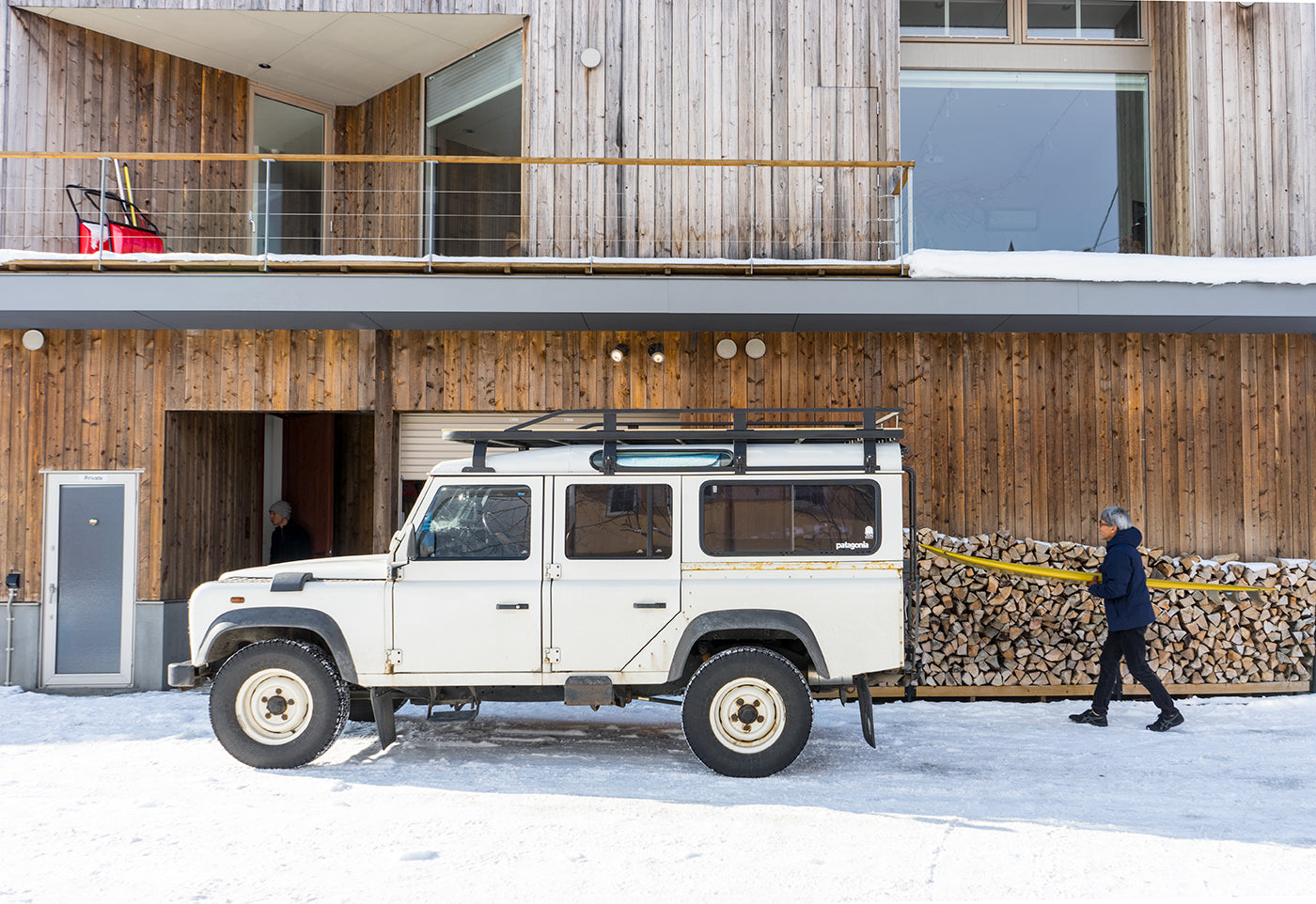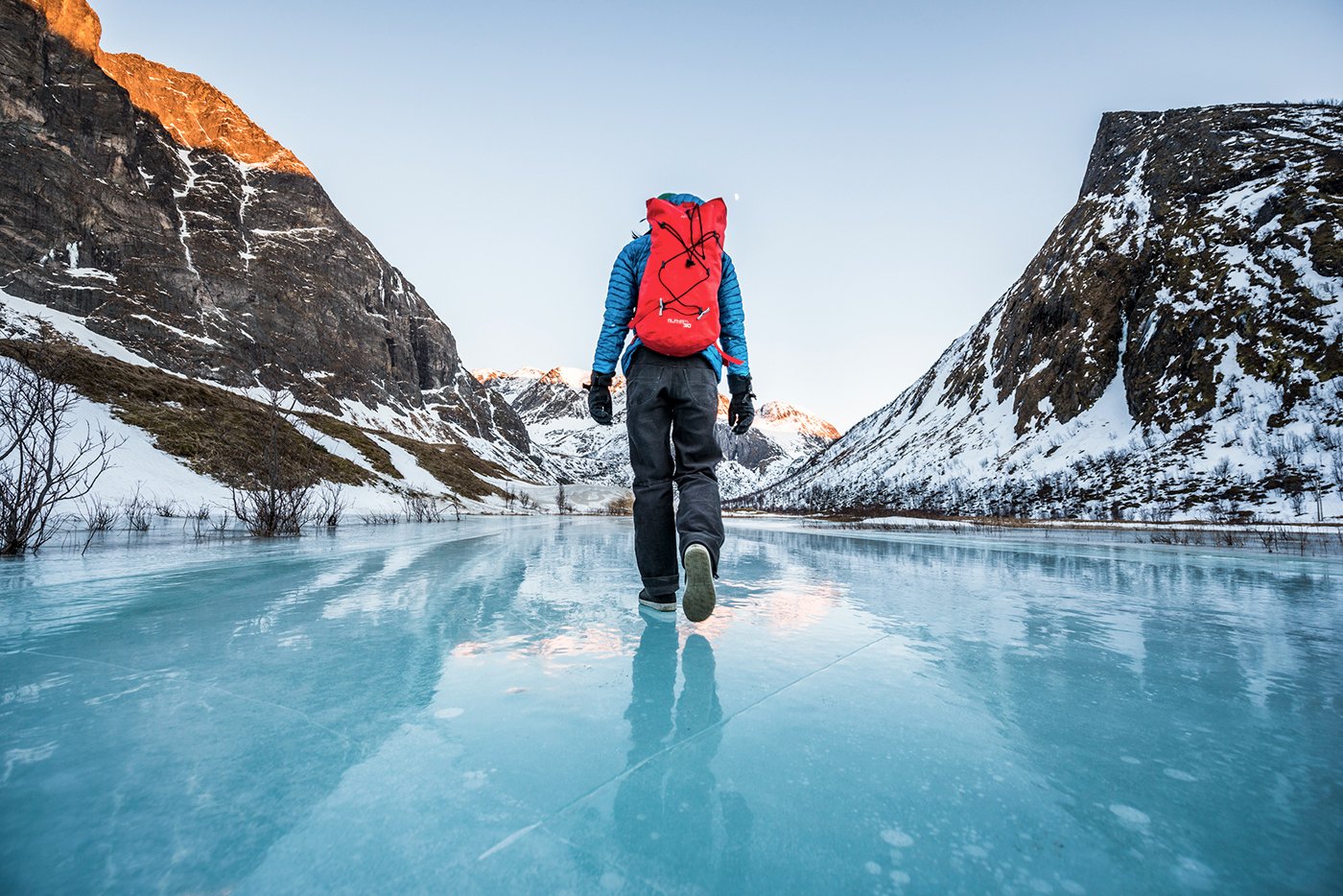
A Harmonious Hokkaido Home for A Snowsurfing Icon
Teeming with heirlooms to Gentemstick, Matt Titone meets Japanese legend Taro Tamai for Surf Shacks Vol.2
Most surfers don’t know who Taro Tamai is. And despite his iconic status within the outdoor community, most snowboarders don’t know who he is either. Gerry Lopez refers to Taro as the Craig Kelly of Japan because of his pioneering backcountry spirit, while Chris Christenson calls him the Skip Frye of snowboarding because of his timeless, heirloom designs. However you try to define him, Taro has always taken a more humble, romantic, and soulful approach to ride a board down the mountain where the rider aspires to be in harmony with nature. That style is also reflected throughout his snowboard brand, Gentemstick.
The beautiful, unbranded boards resemble surfboards more than snowboards. Gentemstick represents Taro’s unwillingness to choose surf over snow or vice versa; it is a perfect balance of both activities and aesthetics. Like an ancient samurai sword, each board feels special; carefully tuned, and crafted. Quality and sustainability over everything else is his unspoken mantra. Taro resides in the same building as his Gentemstick showroom and cafe, which is a mecca for the “snow surf” movement.


Looking down from the living room into the entryway to the studio downstairs—a climbing wall connects the spaces. Cedar panelling covers the building’s exterior. The Rocketfish, Gentemstick’s flagship snowboard model. Below is Taro curled up on the living room couch with a book and a breathtaking view of Mt. Yotei in the distance. (Photo: Matt Titone, Surf Shacks Vol.2)
Describe your first time surfing. What sparked your interest? Where and when did you first learn?
I grew up in a skiing family. I was hooked on skiing powder and moguls when I was very little. The adults would tell me it’s dangerous to ski deep snow, but I guess they meant something similar to saying it’s dangerous to go fishing in a swelling river after heavy rain. We used to go to the ocean too, but it was more for fishing and diving, and we wouldn’t go when the waves were high. I grew up in Tokyo, but as I had the opportunity to experience the “hardcore” of the mountains and the rivers my image of surfing back then was a bunch of guys in black rubber suits floating on an almost-flat ocean. It looked boring and superficial. I then had a chance to go spend some time in a house near the ocean in Izu with some friends. It was summer and I was 19 years old. One of the guys had brought a single-fin surfboard and he convinced me to give it a shot. Although I wasn’t too interested at first, I had to try it to prevent my friend from calling me a coward. Like anyone else, my first day of surfing involved desperately trying to stand up on the board. I somehow managed to catch a wave, pop up, and ride the white water to the shore. That was how my surfing life started.
Why did you first start Gentemstick?
I was a pro snowboarder. I was thinking about board shapes and the evolution of other equipment, thinking about what could make snowboarding better. Before that, I was doing random work to make enough money to live a snow and ‘surf bum’ life. My priority was to be close to the snow or surf, and not the amount of money I could make. I needed a board that worked right for me. At the beginning of snowboarding, people were making boards that they wanted to ride, not boards that were easy to sell. When snowboarding started to emerge and skiing started to decline in the late 1980s, the ski industry got into snowboard production and started to make mass-produced boards from know-how they acquired from ski-making. How snowboarders wanted to ride or how they wanted to turn wasn’t the focus; the purpose was lost, but it helped get more people on the snow. Just like anything else, there’s light and shadow.

The Rocketfish, Gentemstick’s flagship snowboard model. Taro Tamai uses his home as a peaceful escape from the bitter wintry conditions outside and also as a studio for his brand, where he works and creates boards. (Photo: Matt Titone, Surf Shacks Vol.2)
Those ski-like snowboards played a big role in making snowboarding popular, however, it also made snowboarding lose its identity and culture. Many people were getting injured because of poor design. The same thing applies to the software side of things. Ski resorts were originally designed for skiers, and competitions were based on the existing ski event framework. The originality of snowboarding was lost and I think it’s still pretty much the same today. Anyway, my goal was to put snowboarding culture back in the hands of snowboarders, and my means to do it was through board design. I was motivated to start Gentemstick because I wanted to make boards that I wanted to ride and because I was hoping to save a culture that was almost lost through my board-making. It wasn’t easy. All the factories back then weren’t even asking what kind of board I wanted to make but wanted to know if I could afford their MOQ [minimum order quantity] of 2,000 boards. But what I realized while visiting the factories was that the most important thing was to find the right engineer that was able to materialize the shaping ideas I had in my mind. Eventually, everything turned out and I was finally able to start my own brand, Gentemstick, in 1998.


The record player in the study downstairs plays obscure tracks through the evening (above), and Taro Tamai standing outside his home with a selection of boards. (Photo: Matt Titone, Surf Shacks Vol.2)
What are your thoughts on surf culture in general?
Surfing has lost some of what makes it special—it has become more of a commercial sport these days. However, what one can experience, acquire, and feel through surfing is still something very special and something that won’t change with time. I think surfers should be proud of it and tell their story to the rest of the world. I think it’s important to redefine what resides deep in the surfing experience, and the same thing applies to snowboarding. It’s not just about the actions or how it appears to the eye but acknowledging the deeper and more wonderful experience it provides.
Step inside the home's of sea and snow surfers through Surf Shacks Vol.2.


